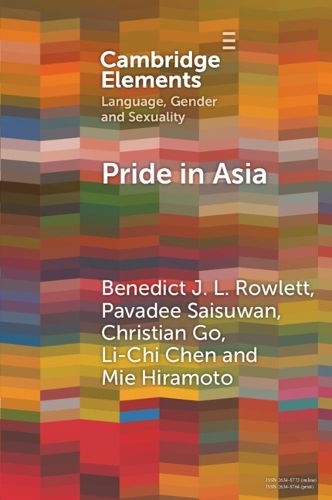Readings Newsletter
Become a Readings Member to make your shopping experience even easier.
Sign in or sign up for free!
You’re not far away from qualifying for FREE standard shipping within Australia
You’ve qualified for FREE standard shipping within Australia
The cart is loading…






This Element provides a transregional overview of Pride in Asia, exploring the multifaceted nature of Pride in contemporary LGBTQIA+ events in Thailand, the Philippines, Taiwan, and Hong Kong. This collaborative research that combines individual studies draws on linguistic landscapes as an analytical and methodological approach. Each section examines the different manifestations of Pride as a discourse and the affordances and limitations of this discourse in facilitating the social, political, and cultural projects of LGBTQIA+ people in Asia, illustrating both commonalities and specificities in Asian Pride movements. Analyzing a variety of materials such as protest signs, t-shirts, and media reports, each section illustrates how modes of semiosis, through practice, intersect notions of gender and sexuality with broader social and political formations. The authors thus emphasize the need to view Pride not as a uniform global phenomenon but as a dynamic, locally shaped expression of LGBTQIA+ solidarity.
$9.00 standard shipping within Australia
FREE standard shipping within Australia for orders over $100.00
Express & International shipping calculated at checkout
This Element provides a transregional overview of Pride in Asia, exploring the multifaceted nature of Pride in contemporary LGBTQIA+ events in Thailand, the Philippines, Taiwan, and Hong Kong. This collaborative research that combines individual studies draws on linguistic landscapes as an analytical and methodological approach. Each section examines the different manifestations of Pride as a discourse and the affordances and limitations of this discourse in facilitating the social, political, and cultural projects of LGBTQIA+ people in Asia, illustrating both commonalities and specificities in Asian Pride movements. Analyzing a variety of materials such as protest signs, t-shirts, and media reports, each section illustrates how modes of semiosis, through practice, intersect notions of gender and sexuality with broader social and political formations. The authors thus emphasize the need to view Pride not as a uniform global phenomenon but as a dynamic, locally shaped expression of LGBTQIA+ solidarity.